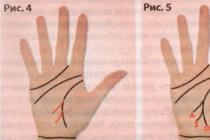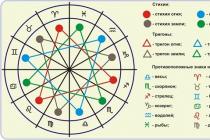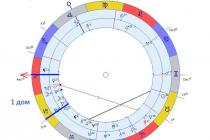In multiparous, there is usually no difficulty in calculating the duration of pregnancy. But women who become pregnant for the first time, for the most part, are faced with a situation when their calculations do not coincide with the doctor's, and this is often interpreted as a mistake of obstetricians. Let's learn how to correctly count the weeks of pregnancy.
Counting methods
Counting the weeks of pregnancy is very important both for the expectant mother and for doctors, primarily because it allows you to track the development of the baby and the progression of pregnancy, comparing them with general standards. Also, determining the exact date will help to calculate the day on which the birth is expected to occur. All examinations, analyzes, screenings, all tables of norms of analyzes and ultrasound data in gynecology and obstetrics are compiled in obstetric weeks, which usually differ significantly from the actual ones.
In order to avoid misunderstandings and confusion, a woman is recommended from the very beginning to get used to counting the term as doctors do.
It is difficult to say whether the date will be exact. Most likely not, because the obstetric method is an average, but it is he who is the most optimal. There are no exact methods because it is impossible to find out the time of conception even with an accuracy of the day... A woman is only fertile for 24-36 hours throughout her cycle. This is the period of her ovulation. This is how much the mature egg retains its viability. Spermatozoa can already be in the genital tract by the time the oocyte leaves the follicle, or they can reach the egg later, but again no later than a day after its release. If the conditions are met, conception occurs.


Ovulation in the vast majority of women occurs in the middle of the cycle, at about 14 days in a 28-day cycle. But it may well shift and occur later, stress, medication, fatigue, colds and a host of other factors can affect this, which in principle cannot be fully taken into account.
Thus, a woman who claims to know exactly when a baby was conceived may be delusional. If a lady leads a normal saturated sex life, then in principle she cannot know the exact moment of conception. Gynecologists, despite all the development of modern medicine, also cannot establish the day and hour of conception, and therefore use a more simplified system of calculating obstetric weeks, unified for all.
By default, the first day of the first week of pregnancy is considered the first day of the cycle in which a significant event took place - the conception of a baby. That is, the lady is having her period, and the first week of pregnancy is already underway. That is why any visit to the doctor while carrying a baby begins with a simple question about the date of the last menstruation - this is how the dates are checked.
Let's walk through the basic methods step by step.

Obstetric calendar
It is this method that is considered the most correct, despite the fact that it causes genuine bewilderment among inexperienced pregnant women - is it possible to be pregnant when there has been no sexual intercourse yet? Can. The first two weeks of the obstetric term is the first part menstrual cycle, preceding ovulation, the second two weeks - the pregnancy is already actual, but not yet obvious. Only at the end of 4 weeks of pregnancy there is a delay when you can do tests, take blood tests for hCG. If they are positive, the doctor makes an appropriate decision based on the date of the last menstrual period - 4 weeks of pregnancy. In fact, from the moment the baby began to exist, it takes about 2 weeks to this moment. Development weeks are called embryonic, and it is not accepted to count the gestational age in them.
Obstetric weeks in pregnancy are 40 or more. The due date falls at the end of the 40th week. But childbirth can occur at any time from the full 37 to 42 weeks, and this will be considered the absolute norm.
Pregnancy began to be considered obstetric weeks long before ultrasound was invented by mankind, and there certainly were no online counters and calculators.

- (first day of menstruation minus three months) + 7 days;
- (first day of menstruation + 9 months) + 7 days;
- first day of menstruation plus 280 days.
Which one to use, the doctor will decide on his own. And he will do this when registering with the antenatal clinic, when the expectant mother turns there.
One obstetric month is equal to four obstetric weeks, in pregnancy there are exactly 10 obstetric months, divided into three trimesters. The period from the moment of conception is about two weeks less than obstetric, and now we know why this is exactly the case.
If the doctor, after examining a woman, twisting the calendar in her hands and thinking, says that she is already 8 weeks pregnant, this is not a mistake, but literally the following: 8 obstetric weeks = 6 weeks from the moment of conception = exactly 4 weeks from the start of the delay.

Ultrasonic method
Ultrasound machines are programmed for obstetric weeks, and therefore if the ultrasound shows that the gestation period is 7 weeks, this means that the pregnancy is exactly 7 weeks, and not 9, as some think, given that two obstetric weeks need to be added to the actual period. 7 weeks by ultrasound = 5 weeks term embryonic development and nothing else.
Modern ultrasound scanners give results in weeks and days, that is, 7 weeks and 5 days or 7 weeks and 3 days, which makes it possible to clarify the gestational age already calculated by obstetricians.
The ultrasound method for determining the exact period is relevant for women who do not remember the date of the beginning of the last menstruation, who do not know it due to the irregularity of the cycle, the broken cycle, as well as after a successful IVF protocol.


It is only important to know that it is possible to most accurately set the time for an ultrasound examination only at early dates... This is due to the fact that all embryos during embryogenesis (up to 9-10 weeks of obstetric time) grow at approximately the same rate.
Then genetic factors come into force, an individual development program: one baby whose parents are not very tall is destined to be medium-sized and small in stature, and the other will have impressive growth and weight indicators from the middle of pregnancy.
The deadline on which you can focus on the ultrasound data in determining the timing is 11-13 weeks, it is at this time that the first prenatal screening is carried out, the purpose of which is not only to detect the likelihood of fetal chromosomal abnormalities, but also to adjust the timing as well.

Gestational age
Here is another obstetric term that raises many questions not only among inexperienced expectant mothers who are expecting the birth of their first children, but also among women who have given birth before - how long does gestation begin, what is it, why is it considered at all?
This term hides already familiar to us embryonic term, that is, the period from the moment of the fusion of the germ cells of the mother and father and the beginning of a new independent child's life. The exact gestational age is known only to those who conceived under the supervision of doctors.- who was inseminated on the day of ovulation, confirmed by an ultrasound protocol, who did IVF (in this case, doctors not only up to the day, but also up to an hour know when and how the egg and sperm merged, because it happened in a test tube) ...
This does not mean at all that pregnant women after IVF should consider the term in its gestational equivalent. The gestation period, like others, will be counted in obstetric weeks from the first day of the last menstruation, if the woman knows her, or according to ultrasound data, but again strictly in obstetric weeks.

Online calendars and counters
A modern woman does not need to keep counting for a long time and painfully with a pencil and a calendar, adding or subtracting months to calculate the PDD - the estimated date of birth. Today there are a lot of all kinds of calendars and counters. In them, it is enough to enter the date of the last menstruation and the duration of your menstrual cycle, and now the result is the current date, and the estimated day of birth, and the ordinal number of the month, trimester, and even the probability of the birth of a boy or girl (everything except this item corresponds to reality , the last point is for fun, comes true with a probability of 50/50).
Some counters are equipped with detailed functions: they not only count everything, but also lead detailed information about how the baby is developing by weeks, what is its height and weight, developmental norms. Counters are free.

PDR - for sure or not?
And finally, it should be clarified about the accuracy of the DA. A specific day is indicated, for example, March 15. This does not mean that a woman will give birth on this very day. Little of, strictly in the PDR, no more than 5% of pregnant women give birth- these are the medical statistics. The PDR itself does not exist so that the future dad would postpone all affairs on this day in advance, and not so that the future mother would check the forecasts of numerologists and saints to choose a name for the one born on that day. PDR is an approximate guideline. The birth itself will take place when both the maternal and the child's organisms are fully prepared for this responsible process.
At 37-38 weeks, up to 20% of children are born, at 38-39 weeks - about 30%, after 39 weeks - 40%, the remaining 10% of babies appear either before 37 weeks or after 40 weeks. Up to 42 weeks inclusive, childbirth is considered urgent, pregnancy has the status of prolonged, but not delayed, as many think. Therefore, feel free to add 2 weeks to the PDR or subtract 2 weeks from it. During the resulting month, the child can be born at any time.
If you have a large fetus or you usually have a menstrual cycle that lasts more than 32 days, then there is every chance that your pregnancy will not be limited to 40 weeks. If you have multiple pregnancies or have a normal menstrual cycle of less than 28 days, the chances are good that you will have labor before 40 weeks.

Answering questions on blogs, I was faced with the fact that for many women the estimated date of conception remains a mystery and obstetric term pregnancy, despite numerous ultrasounds and consultations of an obstetrician-gynecologist. Moreover, according to women, there is often no mutual understanding between ultrasound specialists and gynecologists, which brings even more chaos to the minds of pregnant women.
The situation is especially difficult in women with irregular or irregular menstrual cycles.
In this blog I will try to sort out how I myself calculate the estimated date of conception, based on the data you provided. 
First, let's define the concept "obstetric gestational age" and I will philosophize on the topic of why progress is running forward, it is now possible to determine the day of ovulation with an accuracy of the day and the age of the embryo according to the CTE to within ± 4 days, and the "obstetric term" does not go down in history.
Historically, it so happened that for a woman, the main sign of pregnancy was the absence of menstruation, therefore, the gestational age began to be counted from the date of the last menstruation.
Of course, on the first day of menstruation, no one gets pregnant, but until relatively recently this was the only starting point from which an obstetrician-gynecologist could start.
Later, knowledge appeared about the menstrual cycle, about ovulation, about the life span of the egg and sperm cells, the fertility window, etc.

It has been observed that for most women, the menstrual cycle lasts approximately 28 days and ovulation occurs in the middle of the cycle, i.e. on day 14. The egg after ovulation retains the ability to fertilize for only one day, so the day of ovulation and the day of conception practically coincide. But at the same time, sperm retain the ability to fertilize for 3-5 days, so sexual intercourse and conception do not necessarily occur on the same day.
So, what is obstetric pregnancy?
For most women with regular menstrual periods, 28-29 calendar days is the number of weeks that have passed since the first day of her last menstrual period. With this calculation, pregnancy normally lasts 38-42 weeks (on average 40 weeks or 280 days).
In the overwhelming majority of cases, this information is quite enough to understand whether the baby is growing normally and when approximately full-term delivery should occur.
Many are perplexed by the first two weeks of obstetric pregnancy. Doctors tell the woman that at that time the gestation period was 1-2 weeks. "But excuse me!" - she objects - "I was not even sure then that I would go on a date at all, and you say that I was already pregnant!" or "I couldn't get pregnant then because my husband was in another city."
In fact, the obstetric period differs from the real (embryonic) period by exactly 14 days upwards.
Why, then, is he needed at all modern world? Unfortunately, getting away from the obstetric term at the present stage of development of medicine is technically quite difficult and impractical.
According to British law, laboratories are allowed to experiment with a human embryo no older than 2 weeks: lawyers motivated this by the fact that after 14 days, the development of the embryo can no longer follow the path of development of twins, which means that in vitro manipulations are manipulations with the fate of the human individual. While scientists believe it would be beneficial to extend the legal time limit by a few days, they acknowledge that the decision should be left to more than just the scientific community, since the issue is ethical.
Thus, it is possible to study the human embryo in vitro only up to the 14th day of development.
And further, the only possible way monitoring the development of the human embryo and fetus is currently ultrasound.
But how to understand what the doctor sees and measures during an ultrasound scan - is it a norm or a pathology?
Especially for this, ultrasound specialists have developed the so-called nomograms, which we now use and which are included in ultrasound diagnostic devices.
Imagine that you are the same enthusiastic doctor who decided to create a nomogram to assess the development of a person's fetus. At the initial stage, not yet knowing what is good and what is bad, you simply measure the studied parameters from everyone in a row and write it down. Then, when the children are born, pediatricians will examine someone and say that this child is healthy, and this one is too small / big or with some kind of developmental anomalies. You will need to track the fate of hundreds (thousands) of fetuses before birth. Then, having already found out what kind of child was born, you will select all those parameters that healthy children had and create the so-called. limits of reference values.
This is a very large and painstaking work that scientists once carried out in different countries, and now we are using the results of their research. But how did they determine the gestational age at which the study was conducted in each case?
The answer is obvious. They asked for the first day of the last menstrual period and indicated the obstetric gestational age.
Of course, there is also a pathological study of abortive material, and pathologists also have their own nomograms, but when creating these nomograms, the gestational age indicated by the obstetrician-gynecologist was used.

At present, when assisted reproductive technologies (ART) are intensively developing, and it has already been proven that the development of these children is no different from children conceived naturally, when many pregnant women know exactly the day of ovulation thanks to special tests or, it is quite possible to create new nomograms. which will indicate the reference values for the embryonic period.
But such women are a drop in the ocean among all those who have no idea what ovulation day is. And it is very good that the vast majority of women do not need to know about ovulation, implantation, fertility window, and so on, to conceive and give birth to a child.
And from me, as an ultrasound specialist, an answer is required whether the child is developing normally. Therefore, I will ask about the first day of the last menstruation, calculate the obstetric period, measure the main parameters of the baby and compare them with the nomograms developed once. This rule is!
But, as you know, there are exceptions to every rule.
Such exceptions include women with an irregular menstrual cycle, in whom ovulation may occur not on the 13-15th day of the cycle, but, say, on the 9th or 21st, or even the 30th.
It's good when such a woman comes to the first ultrasound scan at 6-13 obstetric weeks. At these periods, the deviation of the CTE from the mean values is only ± 4 days. And if the heartbeat is normal for the period, then I, as an ultrasound doctor, can adjust the obstetric gestational age up or down by comparing the CTE with the nomogram. Those. the obstetrician-gynecologist, asking the first day of the last menstruation, sets the obstetric period, say, 8 weeks, and I, having measured the CTE, clarify that in this particular case the embryo corresponds to the obstetric period, say, 6 weeks. And with further observation, the obstetric gestational age is adjusted for these 2 weeks. At a later date, I no longer have the right to adjust the obstetric term, since there are too many individual characteristics and developmental pathologies.
How is obstetric pregnancy calculated using ART?
It would seem that everything is thoroughly known here and there should not be any problems. But in practice, I often come across the fact that in this case there is no understanding.
Here are comments from the internet:
“The landing is 27.10, the protocol is short. Ovulation 21.22.10. If you count: infusion + 2 weeks, then pregnancy from 13.10, if from the first day of the cycle, then pregnancy from 5.10 ... And what ?? “1 day of ovarian stimulation is considered to be the first day of the cycle, ie. the first day of menstruation, which means you need to count from the transfer day minus 2 weeks, they usually stimulate no more than two weeks (just like folks grow in the EC). The day of transfer is the day of ovulation, which means the day of conception. " “We are counting minus two weeks before the day of planting. They may or may not coincide with your period. They did not match for me, as they stimulated for a long time) "
The correct way to calculate the obstetric period in the case of IVF is as follows: we know the day of replanting and we know how many days the embryo was (it does not matter whether it was frozen before replanting or not). Thus, we know for sure the embryonic age and we know for sure that the obstetric gestational age differs from the embryonic one by 14 days. For example, a pregnant woman after IVF came for an ultrasound scan on May 30 and reported that on April 30 she had a five-day embryo transferred. After April 30, 4 weeks and three days have passed. At the time of replanting, the embryo was already 5 days old, which means its embryonic age is 5 weeks and two days. And the obstetric gestation period is 2 weeks longer. This means that when I put the ultrasound probe, I expect to see an embryo whose CTE in my nomograms will correspond to the obstetric gestational age of 7-8 weeks.
And so to summarize. Conception occurs on the day of ovulation and from that day the development of the embryo begins. In the case of IVF, the day of ovulation is the day of follicular puncture. If the embryo is frozen, then the embryonic period is considered from the day of replanting + the age of the embryo at the time of freezing. The obstetric period is 14 days longer than the embryonic one.
The easiest way to calculate the obstetric gestational age and the day of conception is by using a special obstetric calendar. Depending on the data you have, you can find the first day of your last menstrual period, either the day of ovulation or the day the first trimester ultrasound was performed, and quickly determine the obstetric gestational age of today.
For example. On April 30, you were diagnosed with an ultrasound scan: CTE of the embryo = 10mm, which corresponds to 7 obstetric weeks of pregnancy. We find April 30 in the calendar and substitute 7 weeks there. Finding today's date (May 30), we see that the obstetric gestational age is 11-12 weeks today, and the estimated date of conception is March 26 (± 4 days). 
If you still don't understand anything, there is no obstetric calendar, but it is very important to determine the estimated date of conception based on the ultrasound data, then I can suggest this method:
1. Take the calendar for the required year in one hand, in the other hand - the conclusion of an ultrasound scan up to 11 weeks, where the date of the study is written and what period of pregnancy the measured CTE corresponds to.
2. We find the date of the ultrasound scan on the calendar and count back as many weeks as indicated in the ultrasound report (it is better to round up days to weeks up or down).
3. The found date is entered into the "Last menstruation" column. We do not change anything else.
4. Press the button "Calculate", look up a little higher, to the column "Estimated date of conception", see the date and listen to the inner feelings. Remember that sperm cells retain the ability to fertilize for 3-5 days.
5. Do not forget that measuring the CTE will not allow you to set the date of conception with an accuracy of the day, the error is ± 4 days
Example: ultrasound on 05/30/17 CTE 10mm (7 obstetric weeks). We count from 05/30/17 back 7 weeks, we get 04/11/17. We enter this date into the calculator, click to calculate, look up, we see the date 04/25/2017.


Unfortunately, I did not find an online calendar that would calculate the obstetric gestational age and the date of conception, adjusted for ultrasound data in the first trimester. Perhaps we will create it. It is impractical to use ultrasound data of the 2nd and third trimesters of pregnancy for these purposes, since the error is too large.
Few people know that pregnancy is classified into two types: obstetric and embryonic (true, real). Both have their own, very easy ways of counting, which are available to each expectant mother... Which one is actually true, how to calculate both one and the other, and what are the features of each of them - the answers to these questions can be found below.
What does obstetric pregnancy mean?
The obstetric period (the method of determining pregnancy) is the time from the first day of the last menstruation before the conception happened. This definition is quite logical, because the countdown goes from the day when the egg began to ripen, which was subsequently fertilized by the male seed.
This method is universal, but its significant drawback is that the individual characteristics of a woman are not taken into account. The versatility of the method lies in the fact that exactly 280 days (40 weeks) are always added to the first day of the last menstruation.
This is a rather old way of determining the term, which women have been using for decades. It was determined by the people - especially curious women and men once noticed that exactly 280 days pass between the first day of the last menstruation and the birth of a child. Over time, this technique has become firmly entrenched in obstetric practice.
Traditionally, the obstetric period is longer than the embryonic one by 2 (sometimes 3) weeks. Why such a difference occurs is easy to understand: the average duration of a woman's menstrual cycle is 28 days, and ovulation - the day the follicle ruptures and the egg leaves the fallopian tubes - usually occurs in the middle of the cycle, i.e. on the 14th day.
The truth of this method can raise a number of doubts: what about women who have a long (30-35 days) or short (21-25 days) cycle? What about early or late ovulation? Based on these and many other questions and nuances, we can conclude that the obstetric method, although it is a fairly popular way to determine the term, the most informative and accurate is the determination of the date of birth using ultrasound.
The obstetric calculation is called such precisely because the doctor monitors the entire pregnancy of a woman, relying on the day of the beginning of the last menstruation. The reason for this is simple: a woman can indicate this date with 100% confidence, while the moment and date of the "key" sexual intercourse, and even more so - fertilization remain a mystery both for the expectant mother and for the gynecologist.
How to calculate the obstetric gestational age yourself?
It is easy to independently calculate the obstetric period for those women who keep a personal calendar and mark the days of menstruation. So, when confirming pregnancy, this can be easily done at home by looking at the calendar on the first day of the last menstruation.
There are two ways to calculate the term, and each can choose the most convenient for themselves:
- 280 days (40 weeks) Is 9 months and 7 days. So, according to the first method, you can calculate the period by adding 9 months and 7 days to the first day of the last monthly. For example, the last period before the fertilization occurred began on December 10th. We add 9 months - we get September 10th, plus another 7 days - September 17th. This is the expected day of birth.
- The actual duration of bearing a child- 9 months is three less than the total number of months in a year (12). Therefore, you can simply subtract 3 months from the first day of the last menstruation and also add 7 days. Using the above example, we calculate that December is the 12th month in a row. Therefore, 12-3 = 9, and the 9th month is September. 10 + 7 = 17.
That's the whole simple calculation.
How to calculate the real (embryonic) gestational age?
The embryonic (true, real) gestational age seems much more logical to many. It is calculated from the day when conception occurred, i.e. from the moment of ovulation. However, there are also pitfalls here: the calculation takes into account the generally accepted standard value middle of the cycle - 14 days. That is, if a woman ovulates on days 12-18, the true period is not at all true.
It also does not take into account the fact that fertilization does not always happen exactly at the moment when the egg leaves the follicle. In medical practice, unique cases of conception have been recorded, which occurred a few days after the release of the egg or even in the last days menstruation. There are situations when a woman had unprotected sex, a few days later her period went, and after they ended, she became pregnant. All these and other features are taken into account only by one way of determining the term - ultrasound, but even he cannot be trusted 100%.
- According to the above methods, determine the obstetric period and add 14 days.
- Add 14 days to the first day of the last menstruation - this is the approximate date of ovulation (and for girls with a cycle of 28 days, it is accurate), and then another 9 months.
It is even better and easier if the girl is planning a pregnancy and knows exactly the day of ovulation. Then the total duration of pregnancy (266-280 days) is added to this day. You can use the calendar and calculate a more accurate figure.
How does the obstetric term differ from the embryonic one?
Both of these methods of determining the term can be considered relatively reliable. The main differences have already been discussed above, and we can only summarize:
- The obstetric period of pregnancy is counted from the beginning of the maturation of the egg, the embryonic - from the moment of the fusion of the egg and sperm and the creation of the embryo.
- The difference between the two periods is usually 2-3 weeks.
- At the first visit to the doctor and registration, it is the obstetric gestational age that will be determined, and the specialist will be guided by it for all 9 months.
Both of these methods of determining the date of birth are considered conditionally accurate, since a discrepancy of several days or even weeks can be due to a number of reasons. The more carefully a woman monitors her health, cycle and prepares for pregnancy, the higher the chance of the most precise definition term. In addition, ultrasound data, which are the most accurate and scientifically grounded, must be taken into account.
Specially for- Elena Kichak
// Confusion with the timing of pregnancy
Quite often, a woman has a question - why I am given this particular gestational age, especially often after an ultrasound scan.
So there is the so-called obstetric gestational age and true. The obstetric gestational age is counted from the first day of the last menstrual period and, according to this calculation, the pregnancy lasts 280 days or 40 weeks. The fetus may have its own plan for intrauterine life and therefore the gestational age can range from 37 to 42 weeks. This is influenced by many factors.
True term pregnancy is considered from the moment of ovulation (release of the egg). Since normally this happens 2 weeks after the onset of menstruation, it turns out that the true gestational age is 2 weeks less. But we must remember that ovulation can shift in time (occur either earlier or later), and when irregular cycle its onset can be very variable.
The duration of pregnancy during an ultrasound scan is determined based on the size of individual parts of the fetus's body. There are several generally accepted tables developed by individual authors, where the average size of the fetus at different stages of pregnancy is indicated and the error interval is given (sometimes this interval can reach 2 weeks). There are differences between these tables, therefore, in modern ultrasound machines, a program is installed that calculates the gestational age, taking averaged indicators from different tables.
Remember how you choose clothes in the store - there are sizes that you came up with on the basis of average indicators, but it is quite rare that a dress or blouse of your size fits perfectly on your figure, there will certainly be a discrepancy somewhere. So the average size of the fetus, and their compliance with the gestational age, may have individual characteristics.
Now let's see specific example: you know the date of conception, and after the ultrasound, you are given a gestational age that does not correspond to your calculations - there are several explanations - you are confusing the true gestational age with obstetric (remember that it is 2 weeks less), you did not correctly assess the day of conception (ovulation could have occurred later or earlier), the measurements of the fetus were not very accurate.
Usually, in order to determine as accurately as possible with the gestational age, all methods are used in combination and the average is taken. That is, they calculate the period according to the last menstruation, the day of conception and the results of an ultrasound scan - a certain average is obtained that most corresponds to your gestational age.
To avoid confusion, just always count your pregnancy from the first day of your last menstrual period. All measures during pregnancy are calculated according to the obstetric period, so it will be easier for you to navigate with the results of both ultrasound and other studies and analyzes.
In conclusion, a few important tips for early pregnancy:
- If you have a delay in menstruation, it is imperative to find out the reason for this delay (by making a pregnancy test). If it turns out to be positive, contact your gynecologist in the near future. Since there is always a risk of ectopic pregnancy and miscarriage, it is very dangerous not to pay attention to the delay in menstruation, or to postpone your visit to the gynecologist!
- In the first two months of pregnancy, one should refrain from sexual activity. Resume sex life it is possible after the expiration of this period, if the pregnancy proceeds normally and there are no conditions in which the doctor advises to abstain from sexual activity (threat of termination of pregnancy, etc.)
- Do not panic if during the menstrual cycle during which you became pregnant, you led an "intemperate" lifestyle (consumed alcohol, took medications, were ill or had other "excesses"). It is important to discuss all this with your doctor. Only selected species drugs have a proven negative effect on the fetus, and only certain diseases at the very beginning of pregnancy can definitely be a reason for terminating a pregnancy. In the overwhelming majority of cases, all "excesses" and taken cold medications and antibiotics do not have any effect on the fetus and the course of pregnancy. Of course, none of the doctors will be able to confidently answer the question of whether this or that drug or the transferred disease (there are reliable exceptions) will affect the further development of the fetus. This issue is always resolved individually, but one must remember that if a woman nevertheless decides to “play it safe” and have an abortion - its consequences can also be unpredictable and there is a possibility that after this pregnancy may not occur for a long time.
- Weigh and remember your weight - this will help you keep track of how you gain weight during pregnancy
- At the beginning of pregnancy, you may feel nauseous, dizzy, dizzy, chest painful and in general you may feel very ill. It is believed that there is a psychological component to this. That is, when a woman finds out that she is pregnant, a program of behavior known to her is triggered in her (any woman knows that during pregnancy there should be nausea, feeling unwell etc.). I have repeatedly seen how a woman's normal state of health changed in one day, as soon as she found out about her pregnancy and vice versa, some psychological counseling completely removed this condition. This is not scientifically proven, but it is just food for thought.
- Information that you have become pregnant should not significantly change your lifestyle - eat what you want (but in moderation, of course), lead an ordinary life, except that you avoid smokers and places where the air and the environment are very bad, try not to come into contact with sick and sneezing people, get more positive emotions. A glass of wine or champagne with dinner (of course, not every day) is not contraindicated.
- If you went in for sports, you do not need to quit these activities. In the first 2 months, it may be worth refraining from active exercises, and then, if there are no contraindications, it is worth continuing to exercise. Special exercises have been developed for each trimester of pregnancy - specially trained instructors know them - just refer to them. The swimming pool during pregnancy is very indicated (there may be contraindications, but rarely), but you should not actively sunbathe, especially in a solarium. Staying on the beach under an umbrella at a safe time (morning and evening) is only beneficial, as is swimming in the sea.
- Is it possible to fly on an airplane - a frequent question of pregnant women - the answer is very simple - if the pregnancy is proceeding normally - it is possible, if there is a threat of termination - not worth it, and you should also not fly on an airplane a few weeks before giving birth.
Pregnancy is not a disease, a natural state women, the most beautiful time in her life. Nature has very carefully thought out all the processes that occur during pregnancy, and has developed protection mechanisms against various failures. A woman's body can compensate for a lot on its own.
Of course, there are various abnormalities during pregnancy that require correction, and sometimes emergency interventions, but in most cases the pregnancy proceeds normally.
Situations when you must definitely consult a doctor:
- Bloody or brownish or brownish or slightly reddish vaginal discharge
- Lower abdominal pain
- Pain in the lower back, sacrum, coccyx
// Confusion with the timing of pregnancy
Quite often, a woman has a question - why I am given this particular gestational age, especially often after an ultrasound scan.
So there is the so-called obstetric gestational age and true. The obstetric gestational age is counted from the first day of the last menstrual period and, according to this calculation, the pregnancy lasts 280 days or 40 weeks. The fetus may have its own plan for intrauterine life and therefore the gestational age can range from 37 to 42 weeks. This is influenced by many factors.
True term pregnancy is considered from the moment of ovulation (release of the egg). Since normally this happens 2 weeks after the onset of menstruation, it turns out that the true gestational age is 2 weeks less. But we must remember that ovulation can shift in time (it happens either earlier or later), and with an irregular cycle, its onset can vary greatly.
The duration of pregnancy during an ultrasound scan is determined based on the size of individual parts of the fetus's body. There are several generally accepted tables developed by individual authors, where the average size of the fetus at different stages of pregnancy is indicated and the error interval is given (sometimes this interval can reach 2 weeks). There are differences between these tables, therefore, in modern ultrasound machines, a program is installed that calculates the gestational age, taking averaged indicators from different tables.
Remember how you choose clothes in the store - there are sizes that you came up with on the basis of average indicators, but it is quite rare that a dress or blouse of your size fits perfectly on your figure, there will certainly be a discrepancy somewhere. So the average size of the fetus, and their compliance with the gestational age, may have individual characteristics.
Now let's look at a specific example: you know the date of conception, and after an ultrasound scan, you are given a gestational age that does not match your calculations - there are several explanations - you are confusing the true gestational age with the obstetric one (remember that it is 2 weeks less), you are not correctly assessed the day of conception (ovulation could occur later or earlier), measurements of the fetus were not very accurate.
Usually, in order to determine as accurately as possible with the gestational age, all methods are used in combination and the average is taken. That is, they calculate the period according to the last menstruation, the day of conception and the results of an ultrasound scan - a certain average is obtained that most corresponds to your gestational age.
To avoid confusion, just always count your pregnancy from the first day of your last menstrual period. All measures during pregnancy are calculated according to the obstetric period, so it will be easier for you to navigate with the results of both ultrasound and other studies and analyzes.
In conclusion, a few important tips for early pregnancy:
- If you have a delay in menstruation, it is imperative to find out the reason for this delay (by making a pregnancy test). If it turns out to be positive, contact your gynecologist in the near future. Since there is always a risk of ectopic pregnancy and miscarriage, it is very dangerous not to pay attention to the delay in menstruation, or to postpone your visit to the gynecologist!
- In the first two months of pregnancy, one should refrain from sexual activity. It is possible to resume sexual activity after this period has expired, if the pregnancy proceeds normally and there are no conditions in which the doctor advises to abstain from sexual activity (threat of termination of pregnancy, etc.)
- Do not panic if during the menstrual cycle during which you became pregnant, you led an "intemperate" lifestyle (consumed alcohol, took medications, were ill or had other "excesses"). It is important to discuss all this with your doctor. Only certain types of drugs have a proven negative effect on the fetus, and only certain diseases at the very beginning of pregnancy can definitely be a reason for terminating a pregnancy. In the overwhelming majority of cases, all "excesses" and taken cold medications and antibiotics do not have any effect on the fetus and the course of pregnancy. Of course, none of the doctors will be able to confidently answer the question of whether this or that drug or the transferred disease (there are reliable exceptions) will affect the further development of the fetus. This issue is always resolved individually, but one must remember that if a woman nevertheless decides to “play it safe” and have an abortion - its consequences can also be unpredictable and there is a possibility that after this pregnancy may not occur for a long time.
- Weigh and remember your weight - this will help you keep track of how you gain weight during pregnancy
- At the beginning of pregnancy, you may feel nauseous, dizzy, dizzy, chest painful and in general you may feel very ill. It is believed that there is a psychological component to this. That is, when a woman finds out that she is pregnant, a program of behavior known to her is triggered in her (any woman knows that during pregnancy there should be nausea, feeling unwell, etc.). I have repeatedly seen how a woman's normal state of health changed in one day, as soon as she found out about her pregnancy and vice versa, some psychological counseling completely removed this condition. This is not scientifically proven, but it is just food for thought.
- Information that you have become pregnant should not significantly change your lifestyle - eat what you want (but in moderation, of course), lead an ordinary life, except that you avoid smokers and places where the air and the environment are very bad, try not to come into contact with sick and sneezing people, get more positive emotions. A glass of wine or champagne with dinner (of course, not every day) is not contraindicated.
- If you went in for sports, you do not need to quit these activities. In the first 2 months, it may be worth refraining from active exercises, and then, if there are no contraindications, it is worth continuing to exercise. Special exercises have been developed for each trimester of pregnancy - specially trained instructors know them - just refer to them. The swimming pool during pregnancy is very indicated (there may be contraindications, but rarely), but you should not actively sunbathe, especially in a solarium. Staying on the beach under an umbrella at a safe time (morning and evening) is only beneficial, as is swimming in the sea.
- Is it possible to fly on an airplane - a frequent question of pregnant women - the answer is very simple - if the pregnancy is proceeding normally - it is possible, if there is a threat of termination - not worth it, and you should also not fly on an airplane a few weeks before giving birth.
Pregnancy is not a disease, but the natural state of a woman, the most beautiful time in her life. Nature has very carefully thought out all the processes that occur during pregnancy, and has developed protection mechanisms against various failures. A woman's body can compensate for a lot on its own.
Of course, there are various abnormalities during pregnancy that require correction, and sometimes emergency interventions, but in most cases the pregnancy proceeds normally.
Situations when you must definitely consult a doctor:
- Bloody or brownish or brownish or slightly reddish vaginal discharge
- Lower abdominal pain
- Pain in the lower back, sacrum, coccyx














